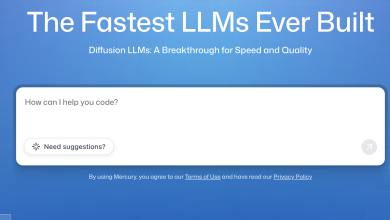Every day, countless outlets publish stories ranging from thoroughly researched investigations to thinly disguised advertisements for projects that paid for coverage. Finding reliable crypto news sources has become increasingly difficult as the industry has grown. The stakes are high too—bad information can lead to terrible investment decisions, while good sources help you understand what’s actually happening beneath the surface of market movements. Developing a personal list of trusted sources takes time, but it’s one of the most valuable things you can do.
Why Source Quality Matters More Than Speed
The crypto news cycle moves at ridiculous speed. Projects compete to be first with breaking news, often sacrificing accuracy for speed. You’ll see headlines about a “major partnership” that turns out to be a nothing burger, or alarming regulatory news that misrepresents what actually happened. The rush to publish means many outlets skip basic verification steps that traditional journalism would require.
Quality sources take the extra time to verify information before publishing. They’ll reach out to companies for comment, check blockchain data to confirm on-chain claims, and consult legal experts when covering regulatory developments. Sure, you might get the news thirty minutes later than from the fastest sources, but you’ll get it right. That trade-off is worth it when you’re making decisions with real money.
Established Publications Bring Journalistic Standards
Traditional finance publications that have expanded into crypto coverage bring something valuable—institutional knowledge of how to report on markets. Bloomberg, Reuters, and The Wall Street Journal apply the same investigative rigor to crypto that they use for traditional finance. When they report that a company is facing regulatory scrutiny, they’ve usually confirmed it through multiple sources and reviewed actual legal documents.
These publications also have reputations to protect that span far beyond crypto. They’re not going to risk their credibility by pumping a project or spreading unverified rumors. Their reporters often have years of experience covering financial markets, which gives them context for understanding how crypto developments fit into broader economic trends. The downside is they sometimes move slower on crypto-specific technical developments where specialized knowledge helps.
Crypto-Native Publications with Track Records
Publications built specifically for crypto, like CoinDesk or The Block, combine speed with specialized knowledge. Their reporters understand the technical nuances of blockchain technology, know the key players across the ecosystem, and can quickly assess whether a development is genuinely significant or just marketing hype.
What makes these sources valuable is their deep industry connections. They often break stories about exchange issues, regulatory developments, or project problems before mainstream outlets pick them up. Their reporters attend industry conferences, maintain relationships with developers and executives, and track patterns across multiple projects. However, it’s worth noting that some crypto-native publications face criticism over their business models—accepting advertising from projects they cover or hosting sponsored content that isn’t always clearly labeled.
On-Chain Data Providers Offer Objective Truth
Sources like Glassnode, CryptoQuant, or Nansen provide something unique—data pulled directly from blockchains without editorial interpretation. These platforms track metrics like exchange flows, whale wallet movements, mining activity, and network usage. The blockchain doesn’t lie about this stuff. If a wallet moved 10,000 Bitcoin, that happened, period.
The challenge with on-chain data is interpretation. Just because a whale moved coins to an exchange doesn’t definitively mean they’re selling—could be internal transfers, could be preparing for an over-the-counter deal, could be any number of things. Quality data providers pair raw metrics with analysis from people who understand market dynamics. They’ll point out patterns that have historically preceded certain market movements, while acknowledging uncertainty and alternate explanations.
Academic and Research-Focused Sources
Universities and research institutions studying blockchain technology provide insights that cut through market noise. Papers from researchers at MIT, Stanford, or Cambridge focus on fundamental questions about how these systems work, their security properties, and their potential applications. This research moves slower than news cycles but often identifies issues or opportunities that market participants miss.
Research-focused sources also tend to be skeptical in healthy ways. They’ll test claims that projects make about their technology, analyze whether blockchains actually solve the problems they claim to address, and evaluate trade-offs that marketing materials gloss over. Reading this kind of analysis helps develop a more nuanced understanding of what’s possible versus what’s hype.
Community-Driven Information with Verification
Crypto communities on platforms like Twitter or specialized Discord servers can surface breaking information incredibly fast. Developers discussing technical issues, users reporting problems with exchanges, or analysts sharing their latest findings—this informal network often beats traditional media to stories.
The problem, obviously, is verification. Anyone can tweet anything. The way to use community sources effectively is to treat them as leads that require confirmation from more established outlets. When multiple credible community members mention the same issue, and their accounts align, that’s worth paying attention to. But never act on information from community sources alone unless you’ve verified it through other channels or confirmed it directly on-chain. Look for accounts with established track records, transparent methodologies, and willingness to admit when they’re wrong.




